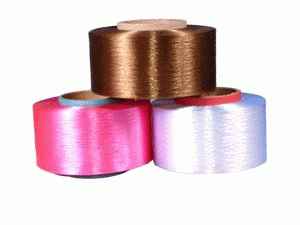What is the effect of temperature on nylon fiber dyeing?
Nylon is a thermoplastic fiber. Therefore, the dyeing rate of fibers is closely related to temperature, and the dyeing temperature must be higher than the glass transition temperature of fibers (35-50 ° C). Nylon fibers begin to adsorb dyes at 40 ° C, and as the temperature increases, the dyeing rate accelerates. By 100 ° C, the dyeing process can basically begin, although dyeing can improve significantly at 100 ° C.

Some researchers believe that the dye uptake of nylon fibers dyed with acidic dyes is related to temperature. When the temperature is higher than the glass transition temperature, the mobility of the large molecular chains in the fiber is enhanced, and the fiber opens, allowing the dye to penetrate the fiber and react with the terminal amino cations. However, if the heating rate is not well controlled, uneven dyeing may occur.
Article source: Nylon colored yarn
-
05-27
The reason why fabrics containing spandex are prone to yellowing
Spandex is a commonly used fiber variety in our daily lives, characterized by good elasticity, low fineness, high elastic modulus (cracking elongation can reach 400-800), and low specific gravity. Spa
-
04-24
Colored non dyed nylon with synthetic fiber raw material
The current conventional fiber coloring mostly uses yarn dyeing method, which has long process, high loss, high cost, and the product has color difference and low color wash fastness. Yarn is prone to
-
03-26
What are the characteristics of non dyed spandex?
Non dyed spandex has also been widely used in recent years. Non dyed spandex fiber can be blended with fibers such as nylon, polyester, acrylic, cotton, wool, etc., which can give fabrics excellent el
-
02-24
The influence of yarn structure on fabrics
The basic characteristics of yarn include its appearance and shape, twisting characteristics, fiber transfer and distribution characteristics in the yarn, as well as the surface fuzz and internal loos
